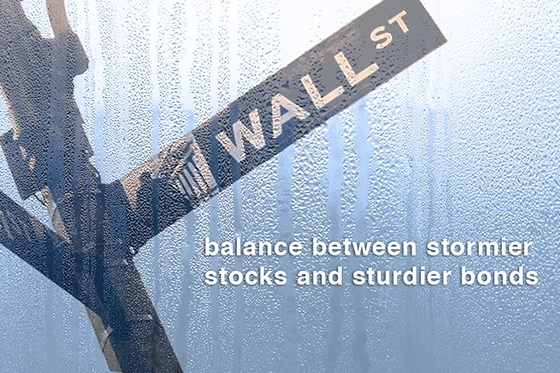
Considering Market Corrections

Depending on how you measure it, the U.S. stock market has been relatively calm now for somewhere between 2– 3 years, with no noteworthy corrections to report. That doesn’t mean there hasn’t been plenty of alarming news that could have triggered a “head for the hills” correction, but so far, nothing has. Not yet.
This has left many investors a tad jumpy, fearing that it’s only a matter of time. As reported by blogger Ben Carlson in his post, “Even Bull Markets Aren’t Easy,” during the past century, “stocks have averaged a 10% correction once a year and fallen at least 20% once every four years or so.” Where does that leave today’s investors? Anyone who has ever waited for a storm that’s predicted but not yet occurred knows the feeling. Should you get out (or stay out) of stocks and hunker down in your emergency cash shelter, or stick with market business as usual?
For investors who have already built a globally diversified portfolio with a correct balance between safer and riskier allocations according to their personal long-term goals, we would suggest at least a couple of reasons to stick with the plan. For one, as reported in this Business Insider post, significant corrections in the range of 10 percent “usually cluster near recessions and crises, not the middle of a positive economic cycle.”
Even more compellingly, as Larry Swedroe reminds us in a recent post, “even a perfectly clear crystal ball that reveals all world events may tell you nothing about where markets are going.” As we described in our guest post, “Ignoring the Siren Song of Daily Market Pricing,” that’s because the market may or may not respond to good or bad economic news as anticipated.
In his aforementioned post, Carlson similarly observes, “actual results are anything but average so setting your watch by the averages and waiting for them to happen right on schedule is impossible.”
What about if you wanted to get in on the continued market growth? Are you too late to the party? As observed in this Covester Smarter Investing post, “Investors have more information at their fingertips than ever before. Yet no one piece of data or research will tell investors when a bull market is over. They don’t ring a bell at the top of the market, as the old Wall Street adage goes.”
In short, despite the market’s periodic storms, it has delivered its best long-term returns to those investors who let themselves experience the weather – and stayed in it for the long-haul. Trying to time the fall of the raindrops costs too much, with odds of success that are too steep. If you’ve not yet done so, the best time to get on track with your customized portfolio, appropriately balanced between stormier stocks and sturdier bonds, is today.
___________________________________________________________________________________________
 Sage Serendipity: Farewell, Joan Rivers. We hope you’re still making audiences LOL in heaven.
Sage Serendipity: Farewell, Joan Rivers. We hope you’re still making audiences LOL in heaven.
 Secure Document Sharing
Secure Document Sharing


